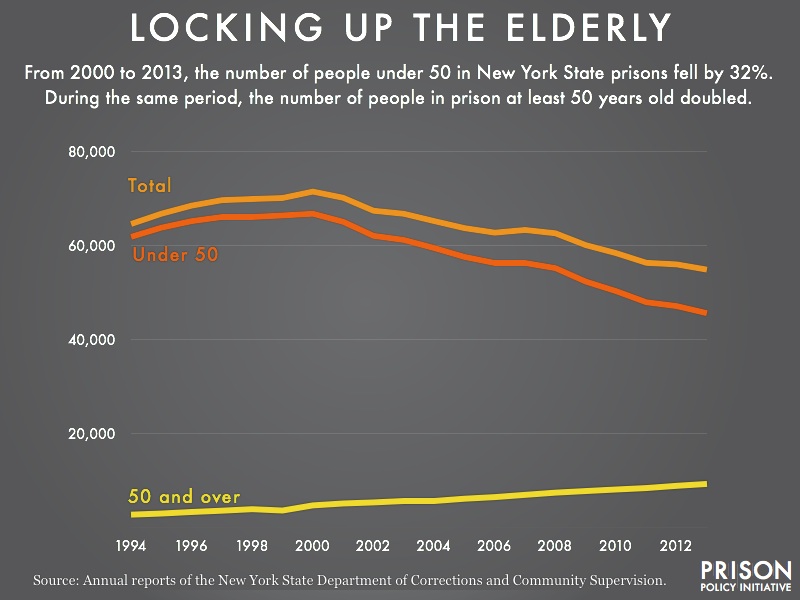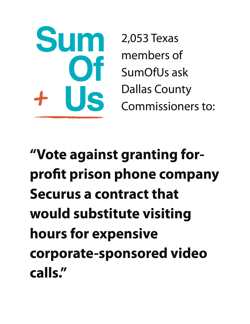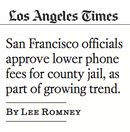by Peter Wagner,
September 12, 2014
While New York State’s prison population has been dropping overall as a result of number of significant reforms, one group being left quite literally behind is the elderly. From 2000 to 2013, the number of people 50 years of age or older incarcerated in New York State prisons has doubled.
A campaign to reduce the number of elderly and infirm people in New York State prisons is being led by Muhajid Farid, lead organizer of the Release of Aging People in Prison campaign.
As the campaign’s website says:
RAPP focuses on this growing population of aging people in prison, many of whom are long-termers convicted of serious crimes. Many of these human beings have transformed their lives and developed skills and abilities they lacked before incarceration. They could be released from prison with no threat to public safety. Yet many are denied release, often for political reasons, and needlessly remain imprisoned into old age. These elders could be released if current mechanisms such as parole and compassionate release were correctly utilized; we also support legislation like the S.A.F.E. Parole Act to reform the parole system and increase the number of releases.
I got to spend some time with Farid at a conference in July, and offered to use our knowledge of the New York State prison system’s data to make a graph showing the problem. With the help of PPI summer research associate Sarah Hertel-Fernandez, we plotted the change in New York State’s prison population by age from 1996 to the present. What’s notable is that New York’s much-heralded prison population decline is confined solely to the population of people under 50. The elderly are being left behind.:

At that same conference Leah Sakala and I had a chance to interview Farid:
If you are in New York City on Sunday afternoon, Farid will be among the speakers at a Brooklyn Museum event Discussion: “What’s Age Got to Do with It? Incarcerating Children and the Elderly”.
Update September 15, 2014: Added the years 1994 and 1995 to the graph.
Note: We’d like to extend this graph further back in time. If you can help us locate the January 1 population reports from the New York State prison system for the years 1993, and 1991 and prior, please contact us.
SB 1135 is a no-brainer. Governor Brown, end sterilization abuse in CA today.
by Bernadette Rabuy,
September 12, 2014
For the past few years, California has been a well-known site of criminal justice reform. Beginning in 2006 and accelerating in 2009, the California prison population declined rapidly. In 2012, in response to a Supreme Court order to reduce unconstitutional prison overcrowding, Governor Brown signed the realignment law, which shifted incarcerated individuals with lower-level offenses from state prisons to county jails. While the results have been mixed, some counties have used the realignment law as an opportunity to adopt and experiment with alternatives to incarceration.
Yet, what is likely less well known is California’s shameful legacy of eugenics. Last year, the Center for Investigative Reporting found that from 2006 to 2010 the California Department of Corrections and Rehabilitation sterilized nearly 150 incarcerated females, permanently ending their chance of future pregnancy and doing so without required state approval.1 Doctors in California prisons pressured incarcerated females—especially those who had served multiple prison terms—to undergo sterilization procedures. When asked about the cost of the procedures, Dr. James Heinrich, an OB-GYN at one of California’s prisons who has been accused of pressuring females to agree to sterilizations, told the Center for Investigative Reporting, “Over a 10-year period, that isn’t a huge amount of money compared to what you save in welfare paying for those unwanted children – as they procreated more.” While Dr. Heinrich claims he performed the procedures for the health and safety of the incarcerated females, the females who were under his care say otherwise. One woman, Kimberly Jeffrey, said a doctor at Valley State Prison pressured her while she was sedated and strapped to a surgical table for a C-section in 2010. Clearly, eugenics is not a practice of the past.
On August 25, we at Prison Policy Initiative sent a letter to Governor Brown in support of SB 1135 (Senator Hannah-Beth Jackson), which is currently sitting on his desk. SB 1135 will clarify the prohibition of sterilizations for the purpose of birth control on incarcerated individuals and will create greater safeguards to ensure that only sterilizations that are medically necessary will be performed. This includes annual reporting of sterilizations performed, broken down by race, age, method, and medical justification. We believe that, whether an individual is incarcerated or not, she should have the right to make her own choices regarding her reproductive life. Justice Now, an Oakland-based organization, has been at the forefront of the movement to end sterilizations for the purpose of birth control in California prisons. Through Justice Now’s leadership, SB 1135 has unanimously passed the California legislature. It now sits on Governor Brown’s desk, and we urge him to end sterilization abuse in California today.
Dallas County tells Securus: No we won't end visiting hours at jail and require expensive video visitation instead.
by Peter Wagner,
September 9, 2014
Today the Dallas County Commissioners Court refused to approve a proposed contract with prison telephone giant Securus. The contract would have required the jail to end visiting hours and instead force families to pay for expensive video visits via computer.
After County Judge Clay Jenkins courageously spoke out against the proposed contract, a movement quickly came together, coordinated by Texas CURE, to urge the other County Commissioners to support Judge Jenkins. (In Texas, the county legislature is called a “Commissioners Court” and the person elected county-wide to be the county’s chief administrator is called the County Judge. For more, see this wikipedia article. )
As I argued in a New York Times Room for Debate feature, prison and jail video communication has the potential to offer additional avenues for critical family communication, but charging unconscionable sums and banning free in-person visits is a step in entirely the wrong direction.
Today, after several hours of eloquent and unanimous testimony and the submission of more than 2,000 petitions from SumOfUs and other petitions collected on NationInside and Change.org, we beat back this horrible proposal!
Now things got a little complicated procedurally, but this was a big, albeit interim, win. The Commissioners Court didn’t approve Judge Jenkins’s order to reject this contract and start over with completely new criteria that would prioritize getting the best service possible for both families and Dallas County, but the Court soundly rejected the two most critical parts of the proposed contract: the ban on in-person visitation and the collection of commissions for video visitation. (At least one commissioner supports commissions in the phone context, but many are opposed there as well.)
As I understand it, the Commissioners Court voted to propose changes to the contract to:
- protect in-person visitation
- renounce the commission on video visitation
- seek clarity on other details, including the number of video visitation terminals that would be provided.
The County proposed to, at next week’s meeting, approve a new request for “Best and Final Offers” based on the county’s new and improved understanding of the importance of keeping families together, and then to send these new requirements out to all of the bidders on the contract to solicit new proposals.
Obviously, some details remain to be worked out, but what seemed clear to us watching the video of the hearing is that the Commissioners Court now understands that in-person visitation is important and that it shouldn’t let Securus — or any vendor — entice the county into breaking up families just to make an extra buck.
Stay tuned for how we can ensure that Dallas finalizes a contract that supports families and benefits all residents of the County, and stay tuned for our forthcoming report on the video visitation industry.
by Peter Wagner,
September 9, 2014
Later this morning, Dallas County Texas will vote on a new telephone contract with Securus that will also ban free in-person visits and require families to pay for video visitation instead.
There have been two good stories this week:

With the vote scheduled for this morning, our friends at SumOfUs collected 2,053 petitions from their Texas members in under 12 hours yesterday urging the county to reject a “contract that would substitute visiting hours for expensive corporate-sponsored video calls.”
To our friends in Texas, good luck today!
Where 96% isn't 96% and clients aren't clients.
by Leah Sakala,
September 2, 2014
For most companies, forking over 96% of revenue would be a disaster. But prison and jail telephone companies don’t operate in a normal market by any stretch of the imagination.
In a recent letter to the Federal Communications Commission (FCC), prison and jail phone company CenturyLink explained that it won its contract with the Escambia County, Florida, jail by promising to kick 96% of call revenue back to the jail. To make up for this loss, CenturyLink explains, the company relies on “ancillary fees to cover costs that otherwise could not be recovered in per-minute rates after deducting the County’s required commissions.” (For more on how commission payments and ancillary fees go hand in hand, check out our second report on the industry.)
Now, a 96% kickback/commission must sound very attractive from a sheriff’s point of view. But, as Pay-Tel founder Vince Townsend explained at last month’s FCC workshop, hidden fees can put sheriffs at a major disadvantage. Because the fee revenue is kept separate from the calling revenue, fee revenue lies entirely outside of the commission system. In other words, the only reason why CenturyLink can promise to kick back 96% of the calling revenue to Escambia County is because the company is collecting 100% of the fee revenue. And while CenturyLink claims to have disclosed all its ancillary fees as part of the contract negotiation process, corporate transparency is the exception in this market, not the norm.
Mr. Townsend pointed out that even a sky-high commission percentage turns out to bring in far less money to a correctional facility once the telephone company has kept the fee revenue for itself. Using $100 of gross revenue as an example, he explained:
I couldn’t do this to my clients*…. If I was scraping 60% of the money off the top [in fees] before I paid them commissions, I couldn’t do that. I respect them too much to do that because it is total deception to go in to somebody and say, “Oh, I’m going to give you 80%!” Well, what’s the 80% on? It’s really on $40. What’s 80% of $40? [The actual commission percentage is] 32%.
But one day they’ll wake up [about how hidden fees reduce commissions], and when they do I’m glad I’m on my side and not doing that.
Now, from the companies’ perspective charging high rates and hefty fees sounds like a profitable way to exploit a literally captive market. It turns out, however, that using some of the techniques found in normal markets can be good for business *and* good for families and communities. The experience of states like New York has found that making phone calls more economically accessible stimulates business. Other prison and jail communications companies are choosing strategies like offering discounts on high-volume holidays to introduce their services to new customers, and lowering fees to increase use of their services.
These normal-market-type tactics are unfortunate anomalies in the prison phone industry, but the movement for fair prison and jail communication policy is making steady progress. The FCC’s first order ruled that the prison and jail phone service fees must be based on the actual cost of doing business, which does not, the order emphasized, include handing over the majority of calling revenue to prison and jail systems. On the state level, places like Alabama are also taking statewide action to rein in the industry’s fees and kickbacks.
Be sure to stay tuned to see how the FCC and states’ next steps keep the ball rolling towards a fairer and more just prison and jail phone market.
*Just to clarify, Mr. Townsend refers to the correctional facilities as his “clients,” but of course who’s paying all the money that is turned into kickbacks and fee revenue? The families of incarcerated people.
Aleks Kajstura gave an invited presentation of our research on two different workshop panels, highlighting the importance of fees and comprehensive reform.
by Leah Sakala,
August 20, 2014

While the Federal Communications Commission’s historic ruling to rein in the prison telephone industry last summer was a huge step forward, there’s lots more to be done. That’s why last month the Commissioners held a Workshop on Further Reform of Inmate Calling Services to gather additional information from experts and industry participants (transcript).
Prison Policy Initiative Legal Director Aleks Kajstura gave an invited presentation of our research on two different workshop panels, highlighting the importance of addressing the wide spectrum of “ancillary fees” in regulation and explaining why fair phone charges must extend to both prisons and jails:
A particular highlight from the workshop was Darrell Baker, the Director of the Alabama Public Service Commission, who described his Commission’s strong new regulation to bring down prison and jail phone call rates and fees in his state.
We commend the FCC for continuing to work towards comprehensive regulation of this deeply broken industry. As we’ve recently blogged, even after the FCC’s initial order was issued last year industry players have wasted no time raising charges and devising new ways to put basic communication out of reach for the families of incarcerated people around the country. And, as Congresswoman Eleanor Holmes Norton pointed out in her remarks at the workshop, a lot is at stake in the struggle for fair communications policy:
We have documented that of all the approaches, the many approaches that are used to reduced recidivism, the one that we can document has the greatest effect is stimulating communication from behind those bars with people in the greater society who will support them and who love them.
Stay tuned (and sign up for our newsletter for the latest updates!) as we continue to fight alongside our colleagues for fair prison and jail communications policy.
by Peter Wagner,
August 19, 2014
On Sunday, John Oliver did an amazing piece about Ferguson, Missouri and the effects of the unnecessary militarization of the police. (Warning: NSFW for language.)
See also the ACLU’s report from June of this year: War Comes Home: The Excessive Militarization of American Policing. As we summarized in the Research Clearinghouse:
“Using… federal funds, state and local law enforcement agencies have amassed military arsenals purportedly to wage the failed War on Drugs, the battlegrounds of which have disproportionately been in communities of color.”
Verizon says no; but the industry and sheriffs say yes to ripping off poor families and endangering public safety.
by Sarah Hertel-Fernandez,
August 12, 2014
The prison and jail communications industry all too often isolates those incarcerated and preys on their families. Despite the FCC issuing a cap on phone rates last year, the companies are raising their fees and innovating exploitative new practices like video-only visitation. Regulation of the cost and quality of communication is more necessary than ever.
The evidence is continuing to mount, and it’s also coming in from some unlikely sources. Verizon, one of the largest telecommunications companies in the country and a previous participant in the prison phone industry, submitted this powerful amicus curiae in an ongoing lawsuit where the industry is trying to halt the FCC’s preliminary regulations. Verizon supports the FCC’s conclusion that “site commissions are not reasonably and directly related to the provision of inmate calling services” and so cannot be “recovered” by inflating rates charged to their end users– the families and friends of those behind bars. After all, “[t]he FCC is required to ensure that the charges for the interstate telecommunications services are ‘just and reasonable'”; and as the company explained in a blog post: “Everyone benefits when inmates successfully transition out of the prison system [and that] affordable contact with family and friends while in prison can help make that happen.”
 Verizon isn’t alone. A growing number of state and local governments are losing patience with the system. Lee Romney wrote this great article for the LA Times on how government officials in San Francisco are pushing back against predatory rates. California already bans state prisons from accepting commissions, and is considering a bill to ban county jails from accepting commissions and require them to award contracts to phone companies that offer the lowest cost of service for those incarcerated. Opponents of the bill say that the commissions are used to fund inmate services, but as lead sponsor Assemblyman Quirk says: there are better sources of funding “than taxing grandma”.
Verizon isn’t alone. A growing number of state and local governments are losing patience with the system. Lee Romney wrote this great article for the LA Times on how government officials in San Francisco are pushing back against predatory rates. California already bans state prisons from accepting commissions, and is considering a bill to ban county jails from accepting commissions and require them to award contracts to phone companies that offer the lowest cost of service for those incarcerated. Opponents of the bill say that the commissions are used to fund inmate services, but as lead sponsor Assemblyman Quirk says: there are better sources of funding “than taxing grandma”.
 But the industry is always evolving. Cari Wade Gervin’s article for Metropulse reports on a disturbing new trend: in Knox County, Tennessee, video visits have replaced in-person visits entirely. She follows the money trail for the implementation of this program.
But the industry is always evolving. Cari Wade Gervin’s article for Metropulse reports on a disturbing new trend: in Knox County, Tennessee, video visits have replaced in-person visits entirely. She follows the money trail for the implementation of this program.
The plan will supposedly save both the families and facilities money, and in theory will increase overall accessibility and safety. In practice, the exorbitant and unregulated fees charged to the families reduce accessibility. And of course, left off the county’s balance sheet are the incredibly damaging psychological and social costs of eliminating in-person visits.
The kicker is this: Video visitation isn’t a random choice on the part of the Knox County Sheriff. It has been massively incentivized by companies — in this case, installation and future maintenance would be provided by Pay-Tel for free, “provided every 15-minute video session would cost $5.99. The county would receive 43.75 percent of those fees… Any revenues go straight to the county’s general fund.” Metro Pulse asked PPI Director Peter Wagner for his reaction: “This is such a uniformly bad idea, I’m kind of speechless.”
Gervin delved deeper into how the profit motive is skewing correctional priorities in her companion blog post: Tech Friends, the company that provides the kiosks used in Knox County, sells their units with the insidious-sounding promise that they will Reduce Inmate Movement and Reduce Jail Traffic. “Seriously,” writes Gervin, “it actually says that part of the point of video visitation is reduce visitors.”
The American Constitution Society has posted the video (and some pictures) from my remarks accepting the David Carliner Award.
by Peter Wagner,
August 12, 2014
In June, I was honored to receive the American Constitution Society’s 2014 David Carliner Public Interest Award. The award “recognizes outstanding public interest lawyers whose work best exemplifies its namesake’s legacy of fearless, uncompromising and creative advocacy on behalf of marginalized people.”
David Carliner (1918-2007) was one of the great public interest lawyers of the 20th Century. He challenged segregation and state bans on interracial marriage, and he fought for the rights of immigrants and the LGBT community. As the founder of the National Capital chapter of the ACLU and the International Human Rights Law Group (now GlobalRights), he was a strong defender of civil liberties and human rights at home and abroad. Carliner liked to say that one shouldn’t mind being an agitator since agitators are the ones who get the dirt out.
I consider the award both a big personal honor and a milestone for the criminal justice reform movement. I went to law school a decade ago when prison populations were going up, and up, and up seemed like the only future. Both the powers that be — and the established progressive movement — were ignoring criminal justice advocates and the idea of criminal justice reform. Things have changed, and it was an honor to celebrate that fact with more than a 1,000 progressive attorneys — including some of the colleagues who encouraged my work over the last decade.
The ACS recently made the video of the award presentation and my remarks available:
(The video starts with ACS President Caroline Fredrickson introducing the award, then David Carliner’s granddaughter Sarah Remes, presenting the award at 3:13, and then my remarks start at 6:30.)
And here are some pictures from that evening:
by Bernadette Rabuy,
August 11, 2014

Today, I had the opportunity to sit down with Sophia Robohn, a Hampshire College student who has been interning at Prison Policy Initiative. Read below to learn more about Sophia.
What brought you to Prison Policy Initiative?
I’m completing a Reproductive Rights Activist Service Corps (RRASC) internship through the Civil Liberties and Public Policy Program at Hampshire College.
Can you tell me more about the internship program?
RRASC sends interns to disciplines that intersect with reproductive rights and gender equality. These disciplines include immigrant rights, local food, and education.
What are some of your interests?
I study medical anthropology and women’s health at Hampshire College. I am heavily involved in feminist studies and activism at Hampshire College as well as emergency medicine.
What projects have you been working on at Prison Policy Initiative?
I have started research on the way school boards district when they have prisons within their boundaries and how that affects the principle of “one person, one vote.” This has included calling everyone from school board secretaries to court judge executives to find district maps, population data, and how they use Census Bureau data to draw their districts.
Why are school boards important?
While there tends to be more interest in congressional districts, school boards can be more heavily impacted by redistricting. I have also seen the way that local politics interfere with school boards. At the end of the day, school boards are responsible for important tasks such as determining school budgets as well as curricula.
What has surprised you about the work you’ve done?
There is a widespread lack of knowledge on how places district and the history of redistricting among school boards. I’ve had superintendents ask me to send them their own district maps because they don’t have a copy. I’ve talked to school board secretaries who know nothing about how their school board is set up or elected.
What has been particularly challenging about the work?
The most difficult part about understanding how school districts work is knowing who to call and when to do so when it seems like you have run out of options. From that, I’ve learned that it’s important to find out if the school district used a demographer or if the district drew the lines themselves. Sometimes, this is in crayon or marker, making maps difficult to decipher. For example, Warrior Run School District in Union County, Pennsylvania has a map that is particularly hard to read and drawn in marker. For El Reno School District in Oklahoma, the map is on the back of a newspaper clipping and is over 20 years ago. Another challenge is finding the right words to say. For example, precinct can mean a polling place in one school district, and, in another school district, it can mean an actual district with boundaries. Terms vary by state and even by county.
What are some questions that you are still hoping to explore?
I’m hoping to learn more about why school boards choose districts over at-large representation in certain areas of the country.
Thank you for your time. Best of luck!
Thank you! I’m really excited about the work I did at Prison Policy Initiative this summer, and I will be on the lookout for future work on prison gerrymandering.
Thanks to Sophia, we will have updates coming soon to our Prisoners of the Census page. Stay tuned!













